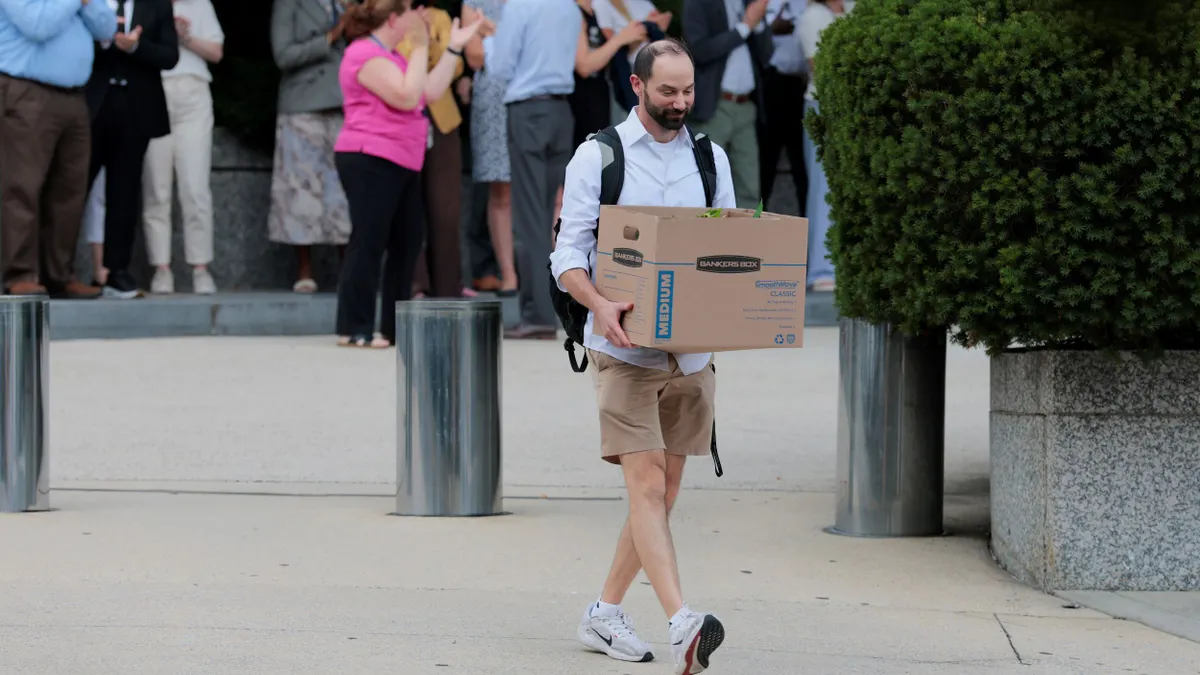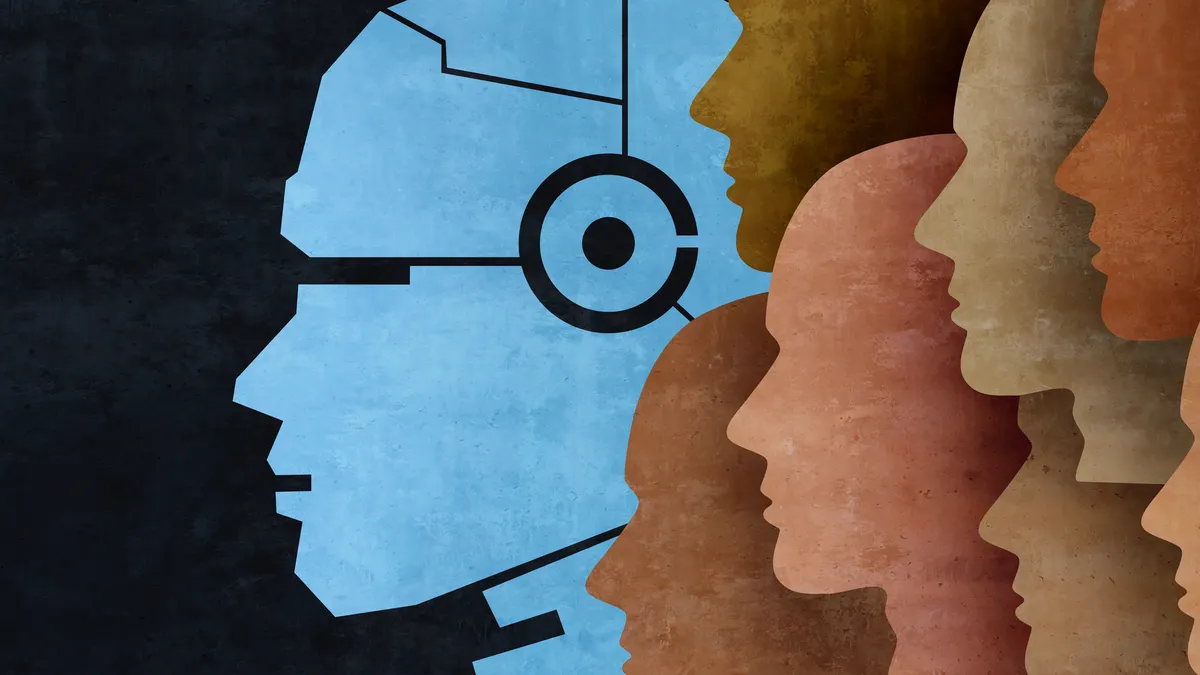Alex Chertoff is a senior research specialist and Duncan Harris is a director, research at Gartner Inc. Views are the authors’ own.
As the pace of digital demands from customers, employees and businesses continues to accelerate, organizations are investing more heavily in digital technologies. CHROs feel overwhelmed by the changing nature and are struggling to define their role in digital initiatives. In fact, Gartner data found that more than half (58%) of CHROs say their technology solutions and strategy do not match their current and future business needs.
Given HR’s vast scope, which impacts all employees, strong digital leadership is crucial for organizational performance. To successfully lead a digital transformation of HR, CHROs must optimize their role as digital leaders, with 69% of CHROs agreeing they should be responsible for leading digital transformation initiatives, according to an April 2023 Gartner survey.
Despite CHROs knowing they must step into digital leader roles, only 17% of CHROs consider themselves to be digital vanguards - defined as an executive leader that co-leads and resources digital delivery teams end to end. This low digital proficiency is a problem as CHROs have reported feeling responsible for a broad range of digital leadership initiatives ranging from core HR functions, such as improving the employee experience to processes often conducted by IT like fostering technology-enabled innovation.
Given that CHROs will step into the role of managing digital initiatives for the foreseeable future, they must work to bridge the gap between confidence and capabilities to successfully lead their HR functions into the future. Here, we highlight recommendations for CHROs to take to become digital vanguards and maximize the value of their digital investments.
Build your relationship with your CIO
CHROs should prioritize meeting with their organization’s CIO on a regular basis to better align HR’s technology roadmap with IT’s strategy. These meetings will allow CHROs to build transparency across functions and collaborate on activities with IT such as vendor selection, HR technology strategy design, roadmap reviews and portfolio discussions. CHROs can also use these meetings to co-create plans to strengthen HR’s independent digital delivery capabilities.
CHROs should use this time with CIOs to discuss how HR can support CIOs learning and development whilst communicating the HR function’s desire to develop more autonomy in managing digital technologies, freeing up capacity for IT. This sustained effort to collaborate with the CIO helps CHROs access the expertise needed for successful HR digital transformation.
Secure commitment to digital transformation from the C-suite
The path to becoming a digital vanguard CHRO starts with partnerships across all functions of the C-suite. Beyond just collaborating with IT, CHROs must work towards securing a shared commitment from the entire C-suite. To do this, CHROs can position themselves as the human-centric digital expert, leveraging their expertise to foster a collaborative culture among executives and ensure a joined-up approach to digital initiatives.
Relevant human expertise areas for CHROs such as change management and employee experience give CHROs a chance to add their unique value and point of view when collaborating with these cross-functional digital steering groups throughout the C-suite. One example of how CHROs can share their expertise is by establishing working norms, such as a shared leadership manifesto, for the C-suite to follow on large-scale digital initiatives. Through mutual learning and shared commitment to new ways of working, organizations can better align values to execute large-scale digital transformation.
Create fusion teams between HR and IT
To enable digital experimentation in HR, CHROs must look beyond the C-suite and support close collaboration between HR and IT through fusion teams, defined by Gartner as a multidisciplinary team that blends technology or analytics with business domain expertise and shares accountability for business and technology outcomes. Instead of organizing work by functions or technologies, fusion teams are usually organized by the cross-cutting business capabilities, business outcomes, or customer outcomes they support.
A fusion based approach to collaboration is also a great way to develop technical talent in HR, providing HR leaders with experiential opportunities to learn new skills. CHROs should implement fusion teams for initiatives where HR capabilities are needed alongside IT’s expertise, Overall, these teams are an efficient and effective way for IT and HR to combine their skill sets and work to deliver key business outcomes, compared to using traditionally siloed project structures.
Engage the HR workforce in digital transformation
In-demand digital skills have rapidly evolved, prompting organizations to question and rethink talent strategies. From the explosion of generative AI to data science and machine learning, organization’s skills needs are changing. The problem is, over half (54%) of HR leaders say they don’t know which skills to invest in developing. This becomes an issue as organizations navigate competition for in-demand talent.
To meet these evolving digital skills needs, CHROs building digital capabilities in HR need to focus on developing sustainable talent solutions, rather than solutions tailored to just current in-demand skill sets.
Dedicating resources to these four key areas can help sustain a digital HR workforce:
-
Recognize new skills: CHROs can motivate their HR employees to learn digital skills through visibility, recognition and formal channels that support career growth. One example of this is digital badges, which serve to validate the achievements of your employees as they go through their learning pathways.
-
Democratize development: Open development opportunities to all HR talent, regardless of role. By allowing anyone that demonstrates a willingness and commitment to learning and applying digital skills the option to participate in these development activities, you will inevitably expand your digital workforce.
-
Foster ambition: To generate ambition in the HR workforce that sustains growth and upskilling, you must drive cultural transformation. This can take the shape of employee-led growth experiences, which allow you to create a culture of growth by empowering employees to adapt career experiences to suit their personal interests.
-
Welcome flexibility: Implement a skills-based approach to assigning and completing work that enables HR employees to develop and apply new skills to meaningful work, opens new talent pools and expands the organization’s capabilities.
A path forward
Digital transformation is notoriously difficult to get right. For example, 67% of CFOs report that digital spending underperforms expectations. With HR technology spending on the rise, CHROs must become successful digital leaders to ensure they maximize returns on their investments.
To remain relevant and integral to the C-suite, CHROs must become digital vanguards. CHROs are faced with the opportunity to drive digital transformation through active collaboration, fostering a culture of digital leadership, and ensuring the workforce is well-equipped with the right digital tools and technology. As organizations continue to invest in digital functions, now is the time for CHROs to become digital leaders to ensure the HR function is actively shaping and contributing to the future of a successful work environment.




















